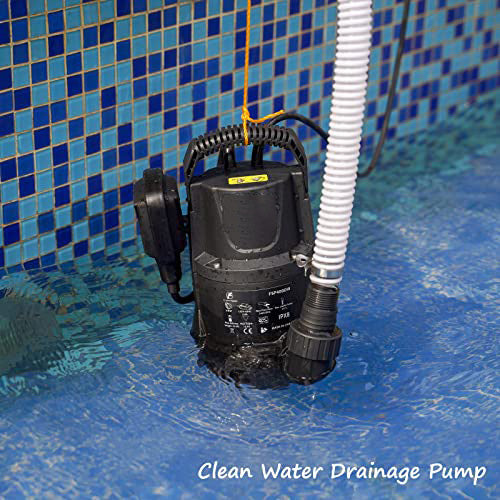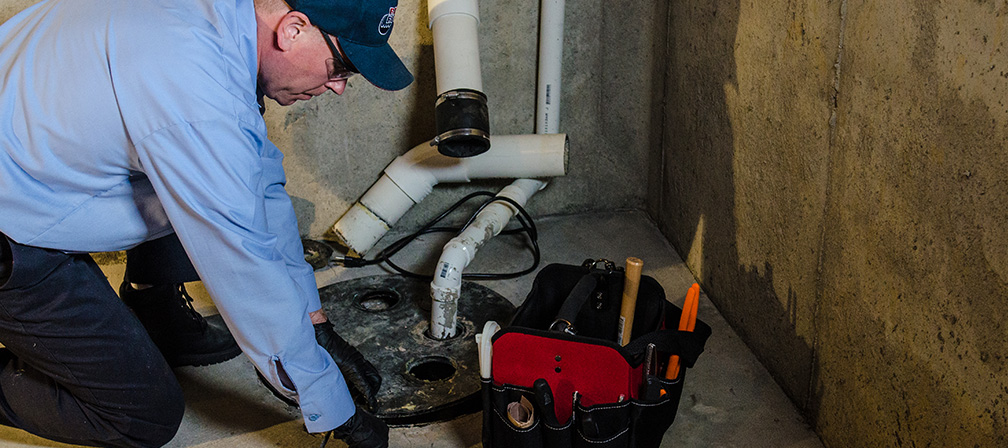Swift Solutions for Cleaning a Sump Pump
Swift Solutions for Cleaning a Sump Pump
Blog Article
We've encountered the article pertaining to Steps to Cleaning Your Sump Pump Properly below on the net and figured it made sense to relate it with you on this page.

Sump pumps are crucial components in many homes, especially in locations vulnerable to flooding or extreme moisture. They aid prevent water damages by efficiently getting rid of excess water from basements or crawl spaces. Nevertheless, like any other device, sump pumps need regular upkeep to ensure they function properly when needed the most. Cleansing your sump pump is a vital part of its maintenance, and comprehending just how to do it properly can conserve you from expensive fixings and possible calamities.
Introduction
Preserving a tidy sump pump is important for its correct performance and long life. Overlooking this crucial task can cause clogs, malfunctions, and eventually, water damage to your property. As a result, discovering exactly how to clean up a sump pump is crucial for homeowners that rely upon these devices to maintain their cellars completely dry and protected.
Indications of a Dirty Sump Pump
Understanding when your sump pump needs cleansing is vital for stopping potential malfunctions. Some typical signs that suggest an unclean sump pump include odd noises throughout procedure, decreased water circulation, and noticeable debris in the pit. If you notice any one of these symptoms, it's important to clean your sump pump without delay to avoid any further problems.
Getting ready for Cleansing
Before you start cleaning your sump pump, it's vital to take some safety and security precautions. Begin by shutting down the power to the pump to avoid any type of electrical accidents. In addition, use ideal protective gear, such as handwear covers and safety glasses, to safeguard yourself from dust, particles, and possible virus.
Recognizing the Sump Pump
Before diving right into the cleansing process, it's vital to have a standard understanding of exactly how a sump pump functions. Normally mounted in a pit or basin listed below the basement floor, a sump pump contains a number of vital parts, consisting of a pump, a float button, and a discharge pipe. When water accumulates in the pit, the float button triggers the pump, which after that pumps the water out with the discharge pipeline, far from the building's foundation.
Step-by-step Guide to Cleaning Up a Sump Pump
Shutting Off the Power
Begin by detaching the power supply to the sump pump to avoid any kind of crashes while cleaning.
Looking For Appropriate Functioning
Before reinstalling the pump, carry out a fast examination to make sure that the float button turns on the pump correctly. Put some water right into the sump pit and observe the pump's procedure. If whatever is working correctly, you can reassemble the pump and reconnect the power supply.
Getting Rid Of Debris and Dust
Utilize a bucket or an inside story to get rid of any kind of noticeable debris, dust, or debris from the sump pit. Dispose of the debris correctly to avoid it from clogging the pump or the discharge pipeline.
Cleaning up the Pump and Float Switch
As soon as the pit is clear of debris, carefully remove the pump from the pit. Evaluate the pump and the float button for any indicators of damages or wear. Use a soft brush or towel to clean the surface areas and eliminate any kind of built up gunk.
Purging the System
After cleansing the pump and float button, purge the sump pit with tidy water to remove any remaining dust or debris. This will certainly aid ensure that the pump operates smoothly and efficiently.
Upkeep Tips to Maintain Your Sump Pump Clean
Along with routine cleansing, there are a number of maintenance suggestions you can follow to keep your sump pump in optimal problem:
Conclusion
Cleansing your sump pump is a critical facet of its maintenance and guarantees that it runs effectively when you require it one of the most. By following the steps detailed in this guide and incorporating normal maintenance right into your routine, you can extend the life-span of your sump pump and protect your home from water damage.
6 STEPS ON HOW TO CLEAN A SUMP PUMP PROPERLY
UNDERSTANDING SUMP PUMPS
Your sump pump plays a crucial role in protecting your home by managing and removing excess water. It primarily functions as a “shield”, guarding your basement against the damaging effects of water accumulation. The pump is housed in a sump pit in the lowest part of your basement, and its job is to pump out any water that collects there.
During heavy rainfalls or when snow melts rapidly, water can infiltrate your basement, posing potential risks like flooding, structural damage, and harmful mold growth. Here, the sump pump springs into action, pumping out the intruding water and directing it away from your home.
SAFETY FIRST
Before cleaning, remember to prioritize safety. Disconnect the sump pump from the power source to prevent any accidental electric shocks. Also, wear sturdy gloves to protect your hands from any sharp or dirty components within the pump.
REMOVE THE SUMP PUMP
After ensuring your safety, the next step is to remove the sump pump from its pit. Doing this might require careful maneuvering as you don’t want to damage any pump components. Once removed, clean the sump pit to remove any accumulated debris or sludge.
INSPECT THE PUMP
Inspect the pump for any visible signs of wear or damage. Check the power cord, float switch, and impeller housing. If any components look worn out or damaged, consider replacing them to ensure optimal performance.
CLEAN THE PUMP
Thoroughly clean the pump with warm, soapy water. Make sure to rid it of any dirt, gravel, or other debris that might impede its performance. You can use a toothbrush to clean the small, hard-to-reach parts of the pump.
REINSTALL THE SUMP PUMP
Reinstall the pump into the sump pit Make sure it’s positioned correctly to remove the water effectively Once it’s back in place, reconnect it to the power source TEST THE PUMP
Finally, pour some water into the pit to ensure the pump works correctly. It should start automatically and begin pumping out the water; if it doesn’t, check the power source and the positioning of the pump.
Remember, while cleaning your sump pump is an essential part of home maintenance, hiring a professional plumber for a thorough inspection and cleaning at least once a year is also important. This will ensure that your pump is in optimal condition, ready to protect your home from potential water damage.
BEST PRACTICES FOR CLEANING SUMP PUMP DISCHARGE PIPES
Regular Inspection: Regularly inspect your discharge pipes, especially during heavy rainfall or snowmelt periods. Look for any signs of blockage or damage. Early detection of problems can prevent serious issues down the line. Periodic Cleaning: Over time, sediment and debris can accumulate in the discharge pipes, impeding the flow of water. Regular cleaning helps keep the pipes clear and functioning efficiently. You can use a high-pressure water jet to effectively clean the pipes. Insulation During Winter: In colder climates, discharge pipes can freeze, blocking the outflow of water. Protect your discharge pipes from freezing temperatures by insulating them with foam pipe insulation. This will ensure the sump pump can continue to discharge water even in freezing conditions. Proper Positioning: The discharge pipe should be positioned to direct water away from your home’s foundation. Improper positioning can lead to water seeping back into the basement. Ensure the pipe is long enough and angled correctly. Installation of a Check Valve: A check valve prevents water from flowing back into your sump pit after the pump has pushed it out. Installing a check valve helps maintain the efficiency of your sump pump and reduces the risk of flooding. Minimize Pipe Turns: Every curve or turn in the discharge pipe can decrease the efficiency of water flow. By minimizing turns and bends in your discharge pipe, you can increase the efficiency of your sump pump. https://www.fullspeedplumbing.com/how-to-clean-a-sump-pump-properly9999/

As a keen person who reads on How to Care for Your Sump Pump, I was thinking sharing that portion was beneficial. For those who liked our page please remember to pass it around. Thanks a bunch for your time. Kindly pay a visit to our website back soon.
Get Quote Now Report this page